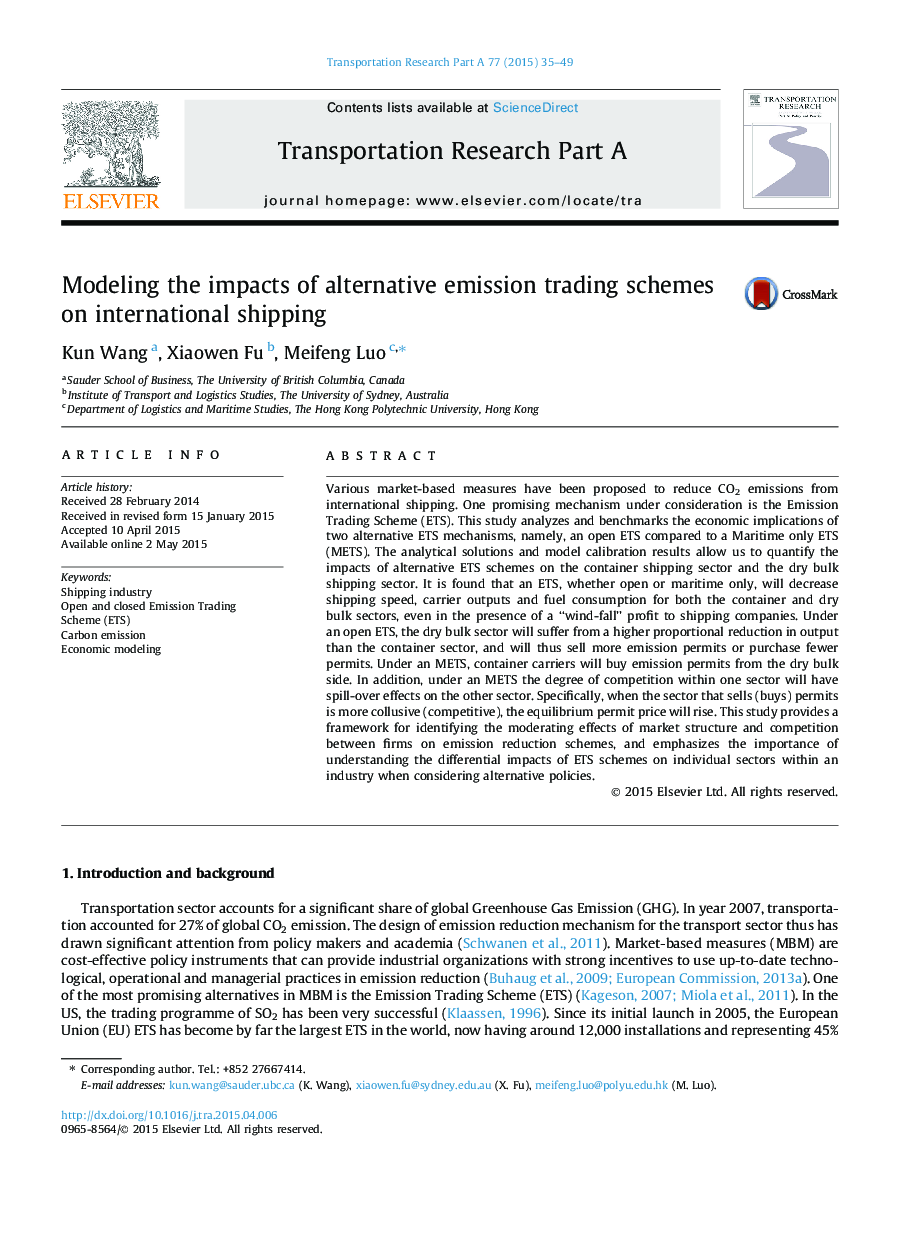| Article ID | Journal | Published Year | Pages | File Type |
|---|---|---|---|---|
| 310403 | Transportation Research Part A: Policy and Practice | 2015 | 15 Pages |
•Emission trading scheme (ETS) is an efficient market-based approach for emission control.•The impacts of different ETS on shipping sectors are modeled and quantified.•Both open ETS and maritime ETS can reduce fuel use, slow the ship, and lower output.•Open ETS will cause a higher proportional reduction in dry bulk sector than container shipping.•In maritime only ETS, container sector will buy permits from the dry bulk shipping.
Various market-based measures have been proposed to reduce CO2 emissions from international shipping. One promising mechanism under consideration is the Emission Trading Scheme (ETS). This study analyzes and benchmarks the economic implications of two alternative ETS mechanisms, namely, an open ETS compared to a Maritime only ETS (METS). The analytical solutions and model calibration results allow us to quantify the impacts of alternative ETS schemes on the container shipping sector and the dry bulk shipping sector. It is found that an ETS, whether open or maritime only, will decrease shipping speed, carrier outputs and fuel consumption for both the container and dry bulk sectors, even in the presence of a “wind-fall” profit to shipping companies. Under an open ETS, the dry bulk sector will suffer from a higher proportional reduction in output than the container sector, and will thus sell more emission permits or purchase fewer permits. Under an METS, container carriers will buy emission permits from the dry bulk side. In addition, under an METS the degree of competition within one sector will have spill-over effects on the other sector. Specifically, when the sector that sells (buys) permits is more collusive (competitive), the equilibrium permit price will rise. This study provides a framework for identifying the moderating effects of market structure and competition between firms on emission reduction schemes, and emphasizes the importance of understanding the differential impacts of ETS schemes on individual sectors within an industry when considering alternative policies.
